Cargando...
Recursos educativos
-
Nivel educativo
-
Competencias
-
Tipología
-
Idioma
-
Tipo de medio
-
Tipo de actividad
-
Destinatarios
-
Tipo de audiencia
-
Creador
Lo más buscado
- Juegos para pintar en básica
- Actividades en la nieve
- Actividades de repaso quinto
- Alexander Fleming
- Actividades didacticas en séptimo
- Experimentos de ciencias para séptimo
- Palabras acabadas en z
- Diccionario alfabético
- Repaso de lengua castellana para quinto
- Juegos de matemáticas sexto
- Altura y duración del sonido
- Actividades para religion
- Juegos de matemáticas cuarto
- Lógica
- Países de África
-
Classifica. Tipus de mescles
EduBook Organización
- 1510 visitas
Observa les mescles que estan representades a les fotografies i classifica-les en homogènies i heterogènies: aigua de mar: oli i aigua: sucre i aigua: suc de taronja i aigua:
-

Resums - L'energia
EduBook Organización
- 1519 visitas
1. L’energia L’energia és el que produeix canvis en la matèria i que ens permet realitzar un treball. Prové de les fonts d’energia, que són els recursos o mitjans dels quals s’obté. La…
-
Initial evaluation 04 - Living things
EduBook Organización
- 1511 visitas
Find an example for each category in the list below: Animals: Invertebrates: Annelids: Molluscs: Arthropods: Vertebrates: Fish: Amphibians: Reptiles: Birds: Mammals: Plants: Fungi:
-
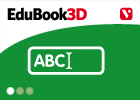
Correct. Characteristics of living things
EduBook Organización
- 1507 visitas
Correct the following sentences: Non-living things are active. . Spontaneous movement is a characteristic of plants. . Living things do not interact with each other. . Animals grow towards the light. .
-
Initial evaluation 03 - Plant reproduction
EduBook Organización
- 1512 visitas
Match the following definitions to the part of the flower they refer to: : the part of the flower that contains the pollen. : a modified green leaf. : the part of the flower that contains the ovules. :…
-
Initial evaluation 04 - Plant reproduction
EduBook Organización
- 1507 visitas
Indicate if each of the following is a seed or a fruit: pear ➝ orange ➝ apple ➝ tomato ➝ pea ➝ melon pip ➝
-
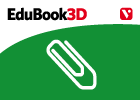
Find out. Nectar
EduBook Organización
- 1516 visitas
Flowers produce nectar to attract insects. Look for information about nectar. What is its function? Why are insects attracted to it? Find out if any other animals are attracted to the nectar in flowers.
-
Match. Natural and artificial materials
EduBook Organización
- 1515 visitas
Decide if each material in the list is natural or artificial: glass ➝ plastic ➝ wood ➝ wool ➝ paper ➝ cotton ➝
-
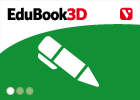
Answer. Materials and their properties
EduBook Organización
- 1514 visitas
Remember what you have studied in this section and answer the questions: What are the two main groups of materials? What does resilient mean? And what does elastic mean? Think about the materials that…
-
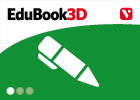
Evaluación final T14 06 - La reproducción de las plantas
EduBook Organización
- 1515 visitas
¿Qué sustancias contiene la semilla y para qué sirven?
Te estamos redirigiendo a la ficha del libro...













